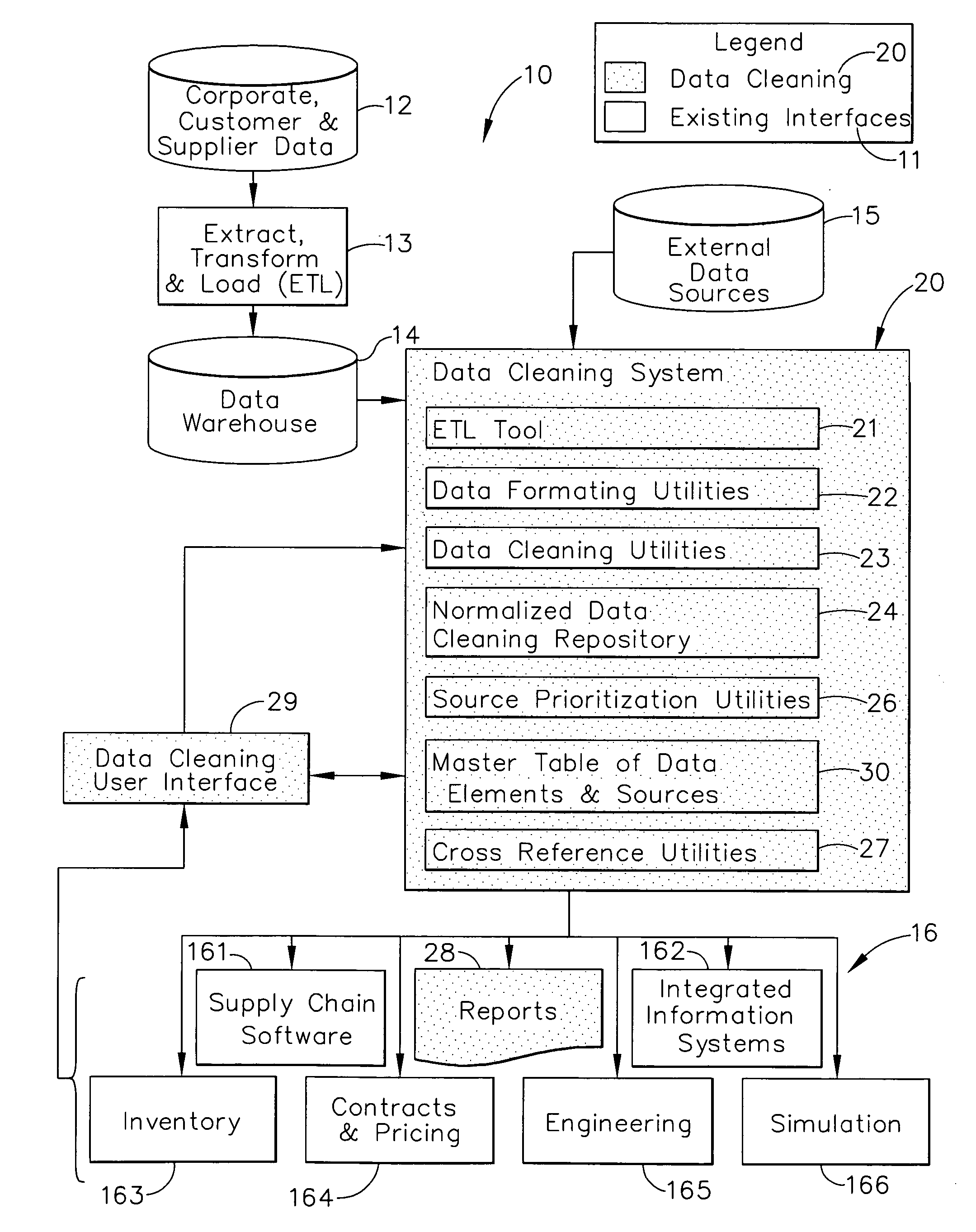Adaptive data cleaning
a data cleaning and data technology, applied in the field of data processing and management processes, can solve the problems of large data set field error rate, high error rate of 5% or more, and inherently easy errors in data entry and acquisition
- Summary
- Abstract
- Description
- Claims
- Application Information
AI Technical Summary
Benefits of technology
Problems solved by technology
Method used
Image
Examples
Embodiment Construction
[0021] The following detailed description is of the best currently contemplated modes of carrying out the invention. The description is not to be taken in a limiting sense, but is made merely for the purpose of illustrating the general principles of the invention, since the scope of the invention is best defined by the appended claims.
[0022] Broadly, the present invention provides an adaptive data cleaning process and system that standardizes the process of collecting and analyzing data from disparate sources for optimization models. The present invention further generally provides a data cleaning process that provides complete auditablility to the inputs and outputs of optimization models or other tools or models that are run periodically using a dynamic data set, which changes over time. The adaptive data cleaning process and system as in one embodiment of the present invention enables consistent analysis, eliminates one time database coding, and reduces the time required to adju...
PUM
 Login to View More
Login to View More Abstract
Description
Claims
Application Information
 Login to View More
Login to View More - R&D
- Intellectual Property
- Life Sciences
- Materials
- Tech Scout
- Unparalleled Data Quality
- Higher Quality Content
- 60% Fewer Hallucinations
Browse by: Latest US Patents, China's latest patents, Technical Efficacy Thesaurus, Application Domain, Technology Topic, Popular Technical Reports.
© 2025 PatSnap. All rights reserved.Legal|Privacy policy|Modern Slavery Act Transparency Statement|Sitemap|About US| Contact US: help@patsnap.com



